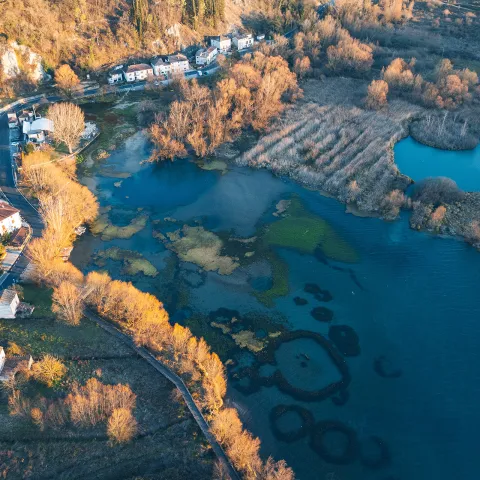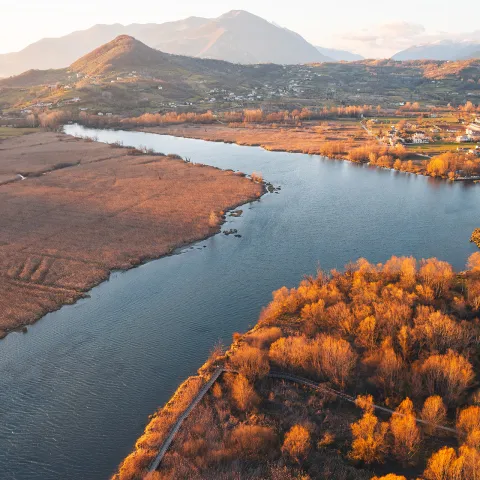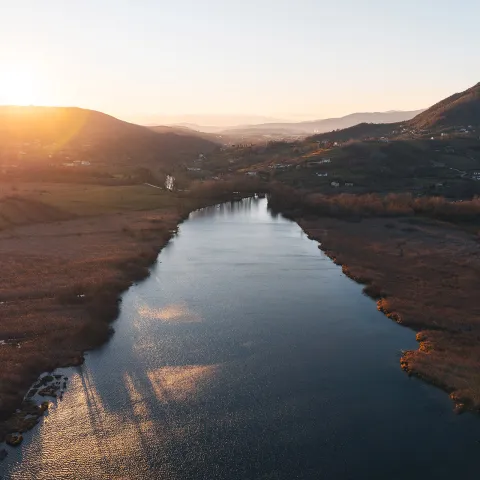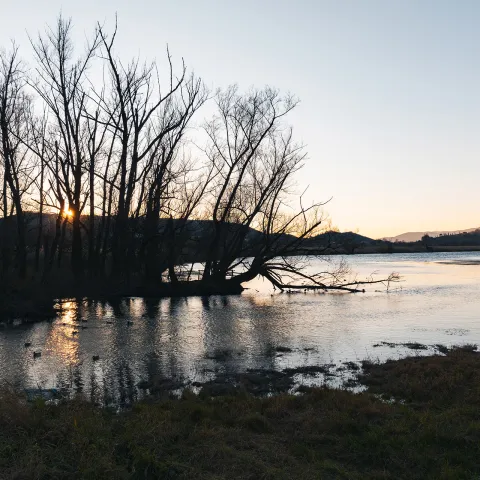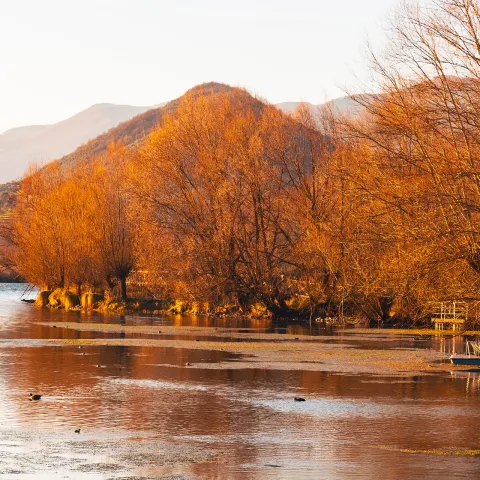Posta Fibreno Lake Nature Reserve
The Posta Fibreno Lake Nature Reserve, established on 29 January 1983, is part of Lazio Region's System of Parks and Nature Reserves
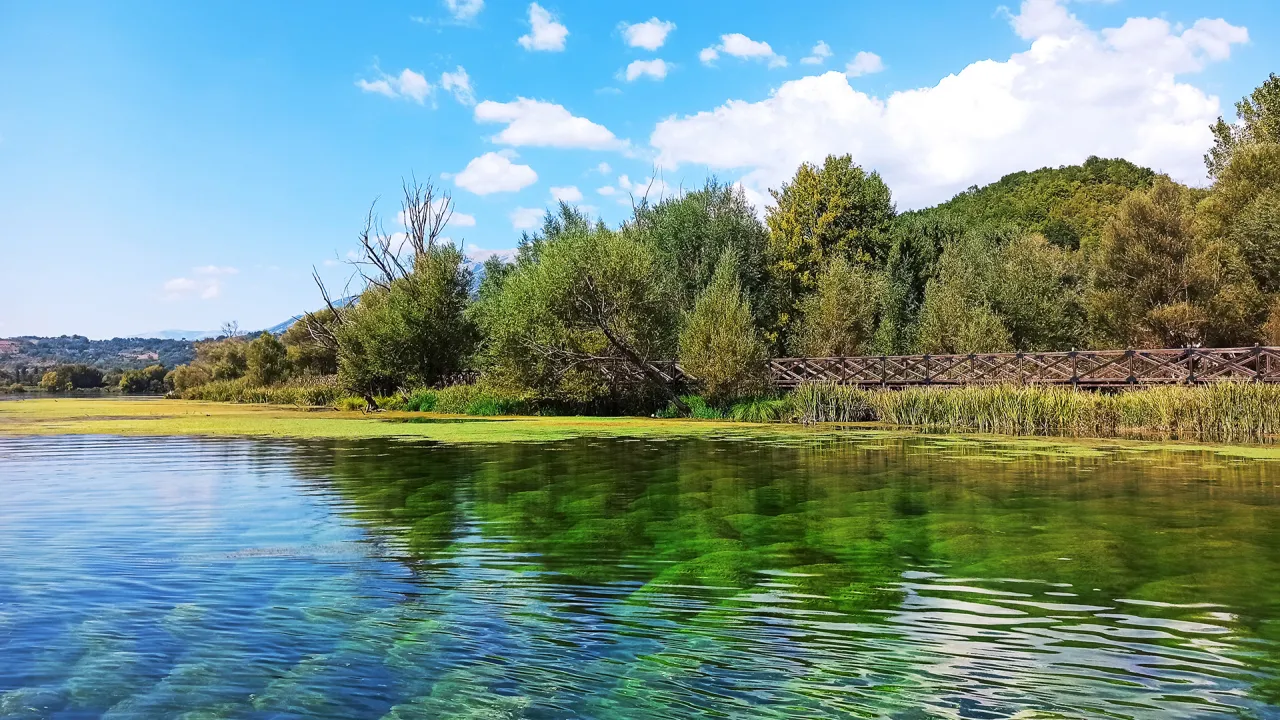
It lies entirely within the municipality of Posta Fibreno, covering an area of 345 hectares, that is, almost half of the entire municipal territory. The lake, with a surface area of around 30 hectares, is the central element of the reserve. A variety of interconnected environments surround the lake: the Fibreno River, the Carpello Creek, reed thickets, extensive fields and a wide hilly area overlooking the northeastern shore.
The lake is like an enormous spring of cool, crystal-clear water, largely fed by the deepest layers of the nearby Marsica mountains. Its slow flow ensures a stable temperature throughout the year of around 10-11°C and exceptional clarity, allowing light to penetrate its depths. These unique characteristics, combined with other environmental factors, allow plant and animal species to interact and trigger complex food chains, at the top of which there are grey herons, marsh harriers, foxes and other predators.
The Fibreno River is the lake basin's only outletand originates from the confluence of the lake's waters with those of the Carpello Creek. After a distance of about 11 km, it flows into the Liri River near the Abbey of San Domenico, the birthplace of Cicero.
At the point where the Carpello stream, Lake Fibreno and the Fibreno River meet, on the left bank, there are ancient constructions once used as "peschere" or fish storage facilities.
The Posta Fibreno Lake Nature Reserve has been classified as a Special Protection Area (SPA) under the Birds Directive 2009/147/EC, due to its significant fauna.
One of the Reserve's most notable species is a fish unknown to most people and endemic exclusively to this area: the Fibreno carp. This salmonid, closely related to trout and whose habits are not well known, has adapted to live and reproduce in the dark environments of underwater karst caves connected to the lake's waters.
The area's geographical location is reflected in its unique plant life, rich in boreal gravitation species that sought refuge here during the rise in temperature after the last Ice Age. The lake bed is covered by a veritable underwater forest of algae and aquatic plants.
PHOTO GALLERY

VIDEO


